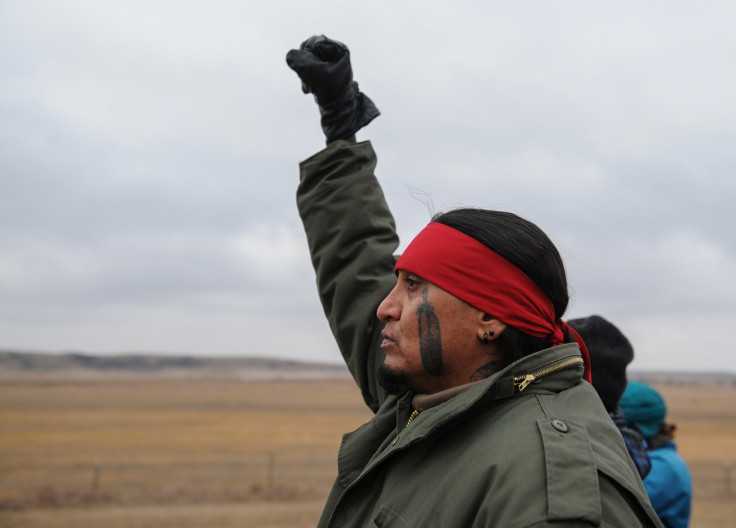What's Happening At Standing Rock? Evacuation Photos Show Dakota Access Pipeline Protesters Forced To Leave Camp

A deadline for Standing Rock Sioux Reservation camp sites to evacuate came to fruition Wednesday, with most camps cleared by the 2 p.m. limit set by North Dakota Gov. Doug Burgum. A few protestors, however, have refused to give up.
"I'm not going anywhere. I carry a knife with me all the time. But I am handing that over so that I have no weapons on me. I will stay and pray, even if they come to remove us," Valerie Armstrong told CNN Tuesday.
Burgum signed the emergency order last week ordering those occupying the area to leave in order to for contractors to clear waste. Since the area is a flood plain, it was subjected to a higher change of spring flooding and ice jams. If removal efforts of waste created by occupants did not take effect soon, environmental hazards would pose public safety risks, according to the executive order.
Efforts have already started to clean-up the protest camp: “"It looks like a trash pile. But it's getting picked up and every spot is starting to look better and better as we work together," Dotty Agard of the Standing Rock Sioux tribe told NPR.
A number of Sioux tribe members predicted that protestors would be met with violence upon their refusal to evacuate the area: "It is going to get real dangerous and violent in my opinion come [the deadline], and if people come, they need to know what's in store," Cheyenne River Sioux Tribe Chairman Harold Frazier said last week during a conference call with reporters.
The Standing Rock protests in North Dakota began in 2016 and aimed to prevent the construction of the North Dakota Access Pipeline which activists and tribespeople say will pollute their water sources and tarnish sacred ancestral burial grounds. The reservation, located throughout North and South Dakota, has been occupied by several Native American tribes including Sihasapa Lakota, Hunkpapa Lakota and Yanktonai Dakota.
© Copyright IBTimes 2024. All rights reserved.






















